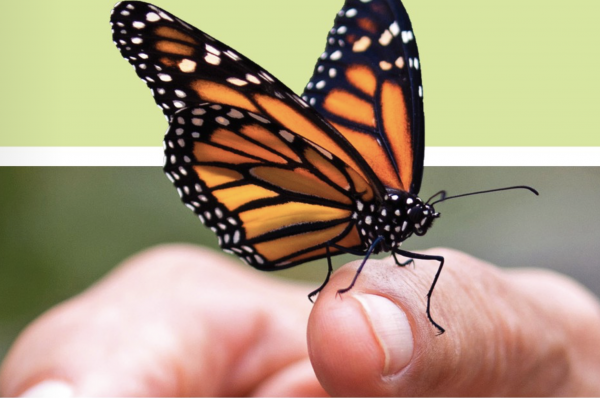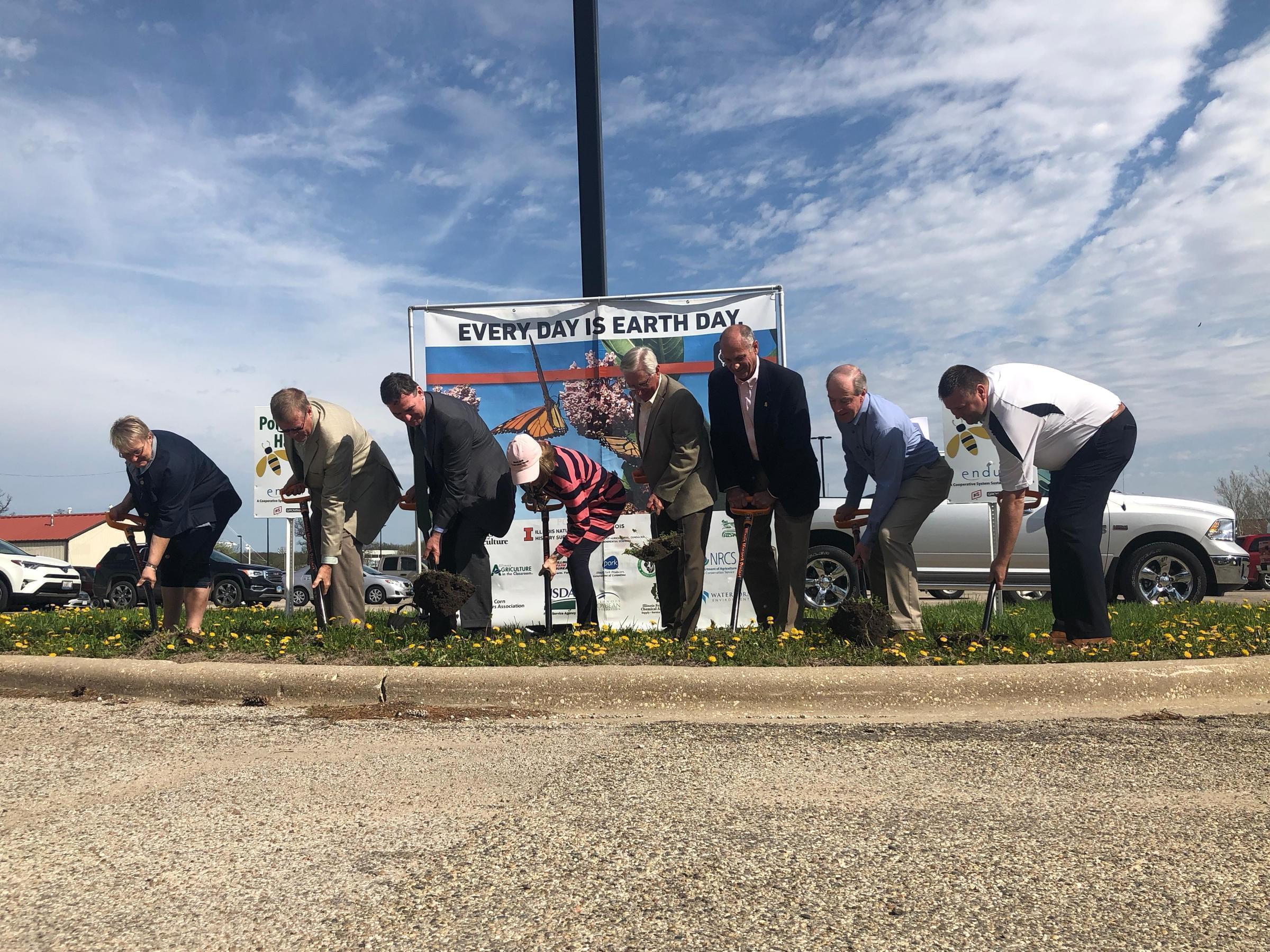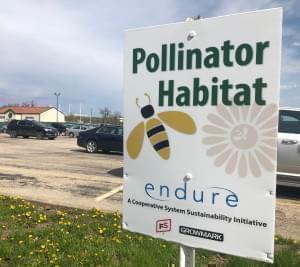Illinois’ Agriculture Sector Pitching In To Save The Monarch Butterfly

A group of 16 Illinois organizations and agencies have teamed up to help the monarch butterfly survive. Illinois Monarch Project/ilagformonarchs.org
A group of 16 Illinois organizations and agencies have teamed up to help the monarch butterfly survive.
For Earth Day, the team unveiled additional steps to their Illinois Monarch Project (IMP) – an agriculture action plan that will enhance monarch preservation efforts.
The group spent over two years developing the plan, which includes adding 150 million more milkweed stems in Illinois over the next 20 years and working closely with farmers, teachers and students to raise awareness.

Sixteen organizations and state agencies with ties to agriculture unveiled an action plan for monarch conservation as part of the Illinois Monarch Project. April 22, 2019.
Rich Guebert, director of the Illinois Farm Bureau, stressed the important job farmers have to conserve the earth and animal habitats. He said farmers have planted pollinator habitats over the last few years, but they will need to adopt additional changes to their farming practices.
“Farmers do recognize they have to do things a little bit different, specifically in their mowing and haying practices,” Guebert said. “And I think for the most part, farmers will take advantage of those opportunities.”
Monarch populations have declined due to loss of habitat, food sources, pesticide use and climate changes all across their migration route which extends from Mexico to Canada. “This is a complex issue with no single solution to the problem,” said Guebert. And approaching it is a collaborative effort between different stakeholders, including those in agriculture, research and education, he said.
In 2014, the U.S. Fish and Wildlife Service was petitioned to evaluate the monarch butterfly population. In June, the federal agency will decide if it will add the monarch to the list of endangered species.

Monarch caterpillars can only survive if they have milkweed. Adult butterflies need nectaring plants and wildflowers. Under the Illinois Monarch Project, stakeholders want to add an additional 150 million milkweed stems across the state by 2038.
Tricia Braid, communications director for the Illinois Corn Growers Association said all efforts -- which began in 2016 -- are to ensure the monarch doesn’t make it to the list. But if it does, Illinois is well underway to help bring populations to a sustainable level, she said.
“This would be a listing like no other — it is international in scope because the monarch butterfly population does migrate all the way from Mexico where it overwinters, into Canada, so this is a massive scale effort.”
The Illinois Department of Natural Resources is also part of the coalition.
IDNR director Colleen Callahan said collaboration was key during the two-year planning process. “This really is the next phase — it is not just a plan on paper,” she said.
“The overall impact will be that we will not live in such doubt about the future of the monarch butterfly,” she said of the action plan.
Visitors to the Illinois State Fair this summer will also see pollinator plots around the fairgrounds. The first of several was unveiled on Earth Day.
Caterpillars survive from milkweed and adult butterflies need nectaring plants and wildflowers.
More can be found at: ilagformonarchs.org

